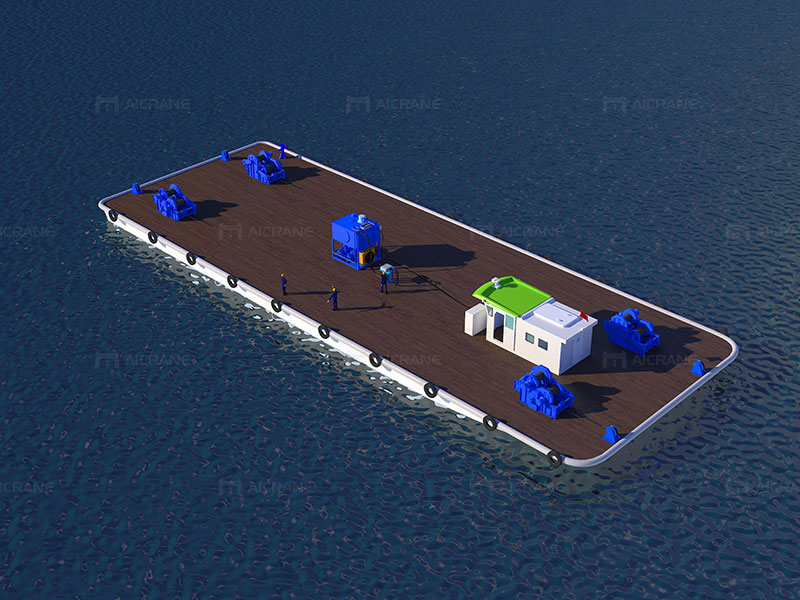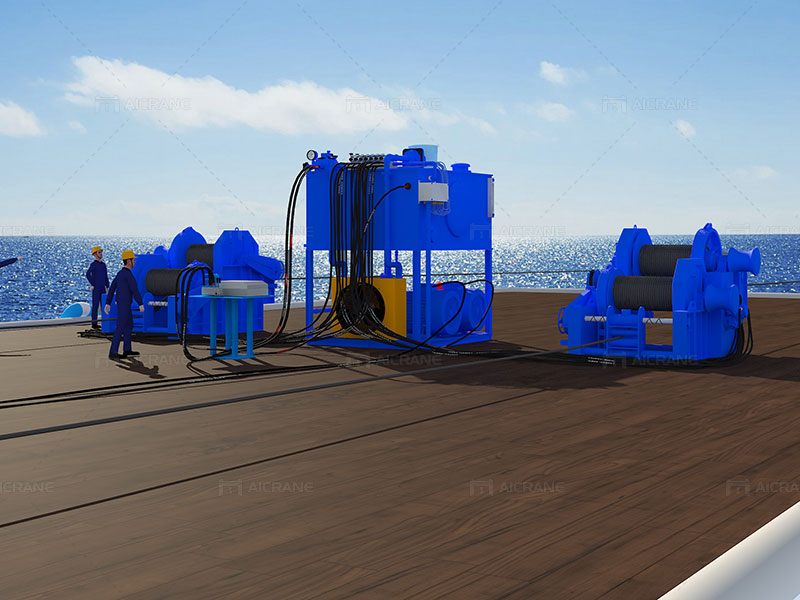Multi-point mooring systems are classified based on the number of anchor points used to secure a floating structure in place. The most common types of multi-point mooring systems are 4-point, 6-point, and 8-point mooring systems.

4-Point Mooring System
This system uses four anchor points, which are arranged in a rectangular or square pattern around the floating structure. The four anchor lines are connected to the vessel’s mooring winches (winch tambatan), which control the tension and positioning of the mooring lines. This system is commonly used for smaller vessels, such as barges, and in calm or sheltered waters.
6-Point Mooring System
This system uses six anchor points, which are arranged in a hexagonal or circular pattern around the floating structure. The six anchor lines are connected to the vessel’s winches, which control the tension and positioning of the mooring lines. This system is commonly used for larger vessels, such as drillships or semi-submersibles, and in moderate sea conditions.
8-Point Mooring System
This system uses eight anchor points, which are arranged in a square or rectangular pattern around the floating structure. The eight anchor lines are connected to the vessel’s winches, which control the tension and positioning of the mooring lines. This system is commonly used for large vessels, such as FPSOs (floating production storage and offloading units), and in harsh sea conditions.
Each type of mooring system has its advantages and disadvantages, depending on the specific application and environmental conditions. The choice of system depends on factors such as water depth, seabed conditions, weather patterns, vessel size, and the type of cargo being transported.

Features And Benefits of Multi-point Mooring Winch Systems
Multi-point mooring winchs (winch tambatan multi-titik) offer several features and benefits, including:
Control and Flexibility: Multi-point mooring winch systems provide precise control over the tension and positioning of the mooring lines, allowing the floating structure to remain stable in a fixed position or to move with the current or wind. The winch systems offer flexibility in adjusting the mooring line lengths and configurations to accommodate varying weather and sea conditions.
Efficiency: Multi-point mooring winch systems are efficient in handling large loads and controlling the mooring lines of the floating structure. The winches have high line speeds and can operate in both directions, enabling quick deployment and retrieval of the mooring lines.
Reliability: The winch systems are designed to withstand harsh marine environments, including extreme weather conditions and corrosive sea water. They are built with high-quality materials, such as marine-grade steel and anti-corrosion coatings, to ensure long-term reliability.
Safety: Multi-point mooring winch systems are equipped with safety features, such as emergency stop buttons, overload protection, and fail-safe mechanisms. These features ensure safe operation and prevent accidents during winch operation.
Cost-Effective: Multi-point mooring winch systems are cost-effective, as they provide a reliable and efficient means of securing a floating structure in place. They require minimal maintenance, reducing the overall operating costs of the mooring system.
Versatility: Multi-point mooring winch systems are versatile and can be customized to meet the specific requirements of different applications, vessel sizes, and mooring configurations. The winch systems (sistem winch) can be designed to handle various types of mooring lines, including chains, wire ropes, synthetic ropes, and fiber ropes.
In summary, multi-point mooring winch systems offer several features and benefits that make them a reliable and efficient means of securing a floating structure in place. They provide precise control, efficiency, reliability, safety, cost-effectiveness, and versatility, making them suitable for a wide range of marine applications.